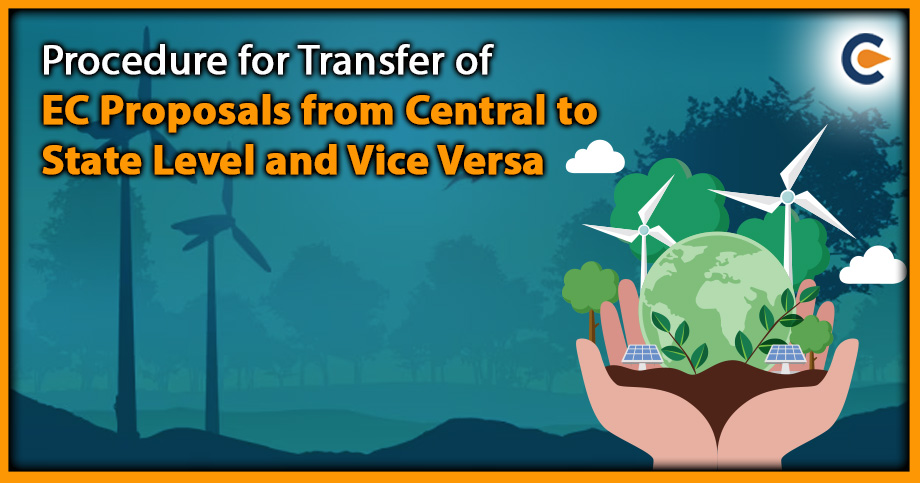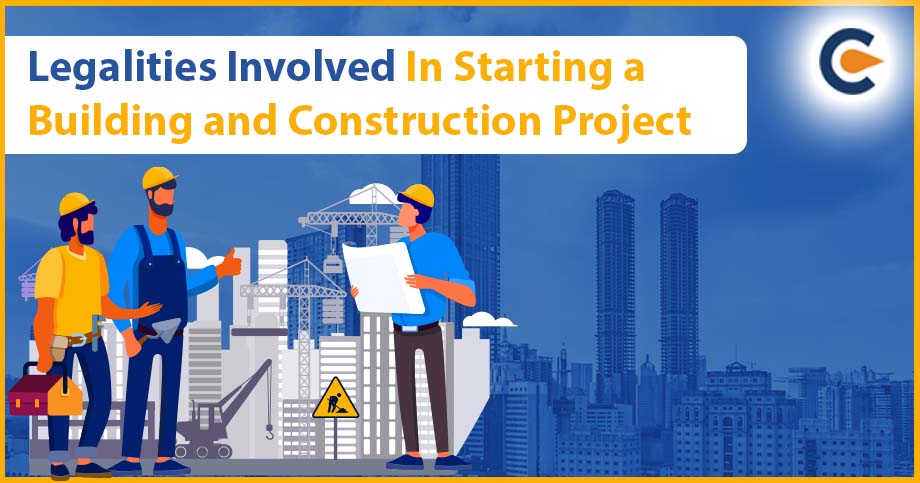Environmental clearance (EC) is obtaining permission from the government or regulatory authority to undertake any development project that may impact the environment. The proposal for obtaining environmental clearance is called an Environment Clearance proposal. The Environment Clearance proposal typically includes a detailed description of the proposed project, its location, size, and scope. The transfer of EC proposals also comprises an assessment of the potential environmental impacts that may arise from the project, such as air and water pollution, loss of habitat, deforestation, and the possible effects on human health. The proposal may also outline measures to mitigate or minimise any adverse environmental impacts, such as adopting pollution control measures, reducing waste generation, using renewable energy sources, and restoring the ecological balance of the area affected by the project.
The environmental clearance process is mandatory for specific development projects, such as large-scale industries, mining operations, thermal power plants, and infrastructure projects like highways, airports, and ports. The EC process ensures that the proposed project does not cause irreversible environmental damage and that any adverse impacts are effectively mitigated or managed.
Stages in the Transfer of EC Proposals from Central to State Level
The procedure for the transfer of EC proposals from the Central to the State level and vice versa is as follows:
- The State Level Impact Assessment Authorities (SEIAAs) and State Level Appraisal Committees (SEACs) have been constituted in the exercise of powers conferred by Section 3(3) of the (Environment Protection) act, 1986, for decentralising of the Environment clearance process and expeditious clearances at the State Level.
- As the SEIAAs/SEACs have gained substantial experience in appraising projects, the threshold of Level B projects has been increased occasionally to delegate more projects.
- The EIA notifications were further amended in 2022, where the category B projects which were inordinately delayed at the SEIAA level would be considered at the central level as Category B projects.
- The Member Secretaries of the Expert Appraisal Committees are directed to transfer of EC proposals to SEIAA to categorisation of such proposals as Category B projects from time to time, in case they are at the following three stages:
- Submission Stage (ToR/EC)
- Placed in agenda for ToR but not considered once by EC.
- Placed in agenda for EC but not considered once by EAC.
- While the transfer of EC proposals online, the member secretaries should inform the project proponent regarding the same.
- The proposals which EAC has once appraised shall continue to be appraised at the central level only.
- The projects that are inordinately delayed at the SEIAA Level for grant of EC the ministry shall consider them at the Central Level on a case-to-case basis, on the following criteria-
- The provision is applicable for EC Applications delayed at the SEIAA level.
- The project proponent is eligible to request the ministry for consideration at the central level if the recommendation of SEIAA needs to be communicated to the proponent within 210 days.
- In case of Central/ State Govt. projects where larger picture of public interest is involved, the project proponent is eligible to request the ministry for consideration at the central level if recommendations of SEAC is not communicated even after the expiry of 105 days-210 days to the project proponent.
- The application should be completed on time due to the requirement of information/details/documents when applying for the project proposal at the centre.
- The application must also be accompanied by an endorsement from the concerned secretary, environment of the state government department.
- The projects which qualify for the above criteria should be considered at the central level as per the following procedure:
- A detailed report to be sought from the SEIAA to ascertain a project proponent’s factual status, stating the delay’s reason.
- If the reason is found to be legitimate by SEIAA, then the proposal is to be considered at a central level, subject to the approval of MoEFCC. An alert is then sent through PARIVESH to SEIAA/SEAC to maintain the status quo of the proposal. One mark shall be deducted for every inordinately delayed transfer of an EC proposal in the SEIAA ranking.
- Once considered at the central level, proposal for transfer of EC proposal will be sent to the SEIAA once the ministry takes a final decision.
- The project proponent in case of an inordinately delay proposal, have to apply online on PARIVESH in the prescribed format.
Laws That Regulate the Transfer of EC Proposals and Environment Clearance
In India, several laws and regulations regulate the Environment Clearance process. These laws and regulations are intended to protect and preserve the environment and ensure sustainable development in India. Some of which include:
- The Environment (Protection) Act, 1986: This is the primary law that regulates the protection of the environment in India. It empowers the central government to take measures to protect and improve the environment. Also, it provides for establishing the National Green Tribunal, which is responsible for adjudicating environmental disputes.
- The Water (P&CP) Act, 1974[1]: This act provides for the prevention and control of water pollution and establishes the Central Pollution Control Board and State Pollution Control Boards.
- The Air Act provides for the prevention and control of air pollution and establishes the Central Pollution Control Board and State Pollution Control Boards.
- The Forest (Conservation) Act, 1980: This act provides for the conservation of forests and the protection of wildlife and requires that any diversion of forest land for non-forest purposes must obtain prior approval from the central government.
- The Coastal Regulation Zone Notification, 2011: This regulation governs development activities in the coastal areas of India and establishes a regulatory framework for protecting the coastal environment.
- The Environment Impact Assessment Notification, 2006: This notification provides the framework for conducting environmental impact assessments for various development projects and prescribing the procedure for obtaining environmental clearance.
Environment Clearance at the State Level and Central Level
In India, the Environment Clearance (EC) process can be obtained at both the central and state levels, depending on the nature and size of the project.
Central Level Environment Clearance: The Ministry of Environment, Forest and Climate Change (MoEF&CC) is the central regulatory authority that grants environmental clearance for projects under the purview of the central government. These include industries, thermal power plants, mining, and infrastructure projects such as airports, ports, and highways with a significant environmental impact. The process for obtaining environmental clearance from the central government involves the submission of a proposal to the MoEF&CC. The proposal is then examined by the Expert Appraisal Committee (EAC), a body of experts appointed by the government to assess the project’s environmental impact.
State-Level Environment Clearance: For projects that fall within the purview of state governments, the State Environment Impact Assessment Authority (SEIAA) is responsible for granting environmental clearance. These include tasks such as small and medium-sized industries, housing projects, and commercial complexes. The SEIAA follows a similar process to the central government, where the State Expert Appraisal Committee (SEAC) examines the project proposal. The SEAC recommends to the SEIAA, which then grants or denies environmental clearance.
Conclusion
An application for transfer of EC proposal is submitted to the regulatory authority to obtain permission to undertake any development project that may impact the environment. The proposal typically includes a detailed description of the project, its location, size, and scope, along with assessing potential environmental impacts and mitigation measures. The Environment Clearance process is mandatory for specific development projects, such as large-scale industries, mining operations, thermal power plants, and infrastructure projects like highways, airports, and ports. The EC process ensures that the proposed project does not cause irreversible environmental damage. It is recommended that a person seeking Environment Clearance or assistance regarding the same should seek expert advice from professionals in this field.
Also Read:
Environmental Clearance Process In India: A Complete Outlook











